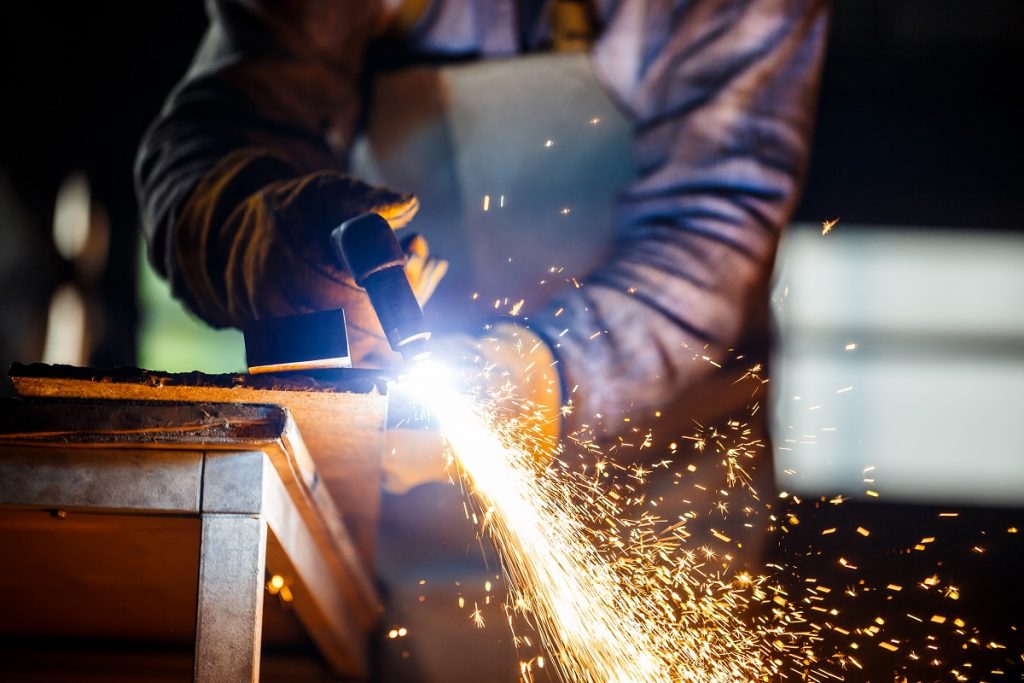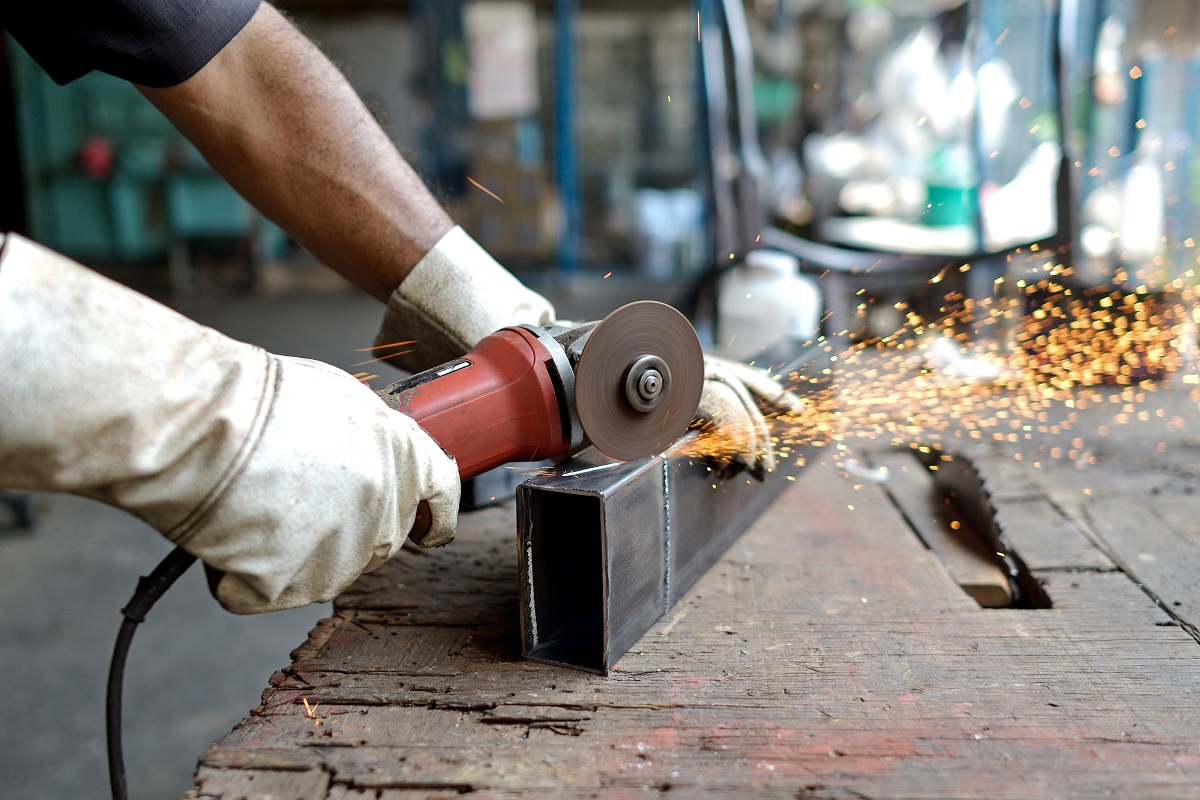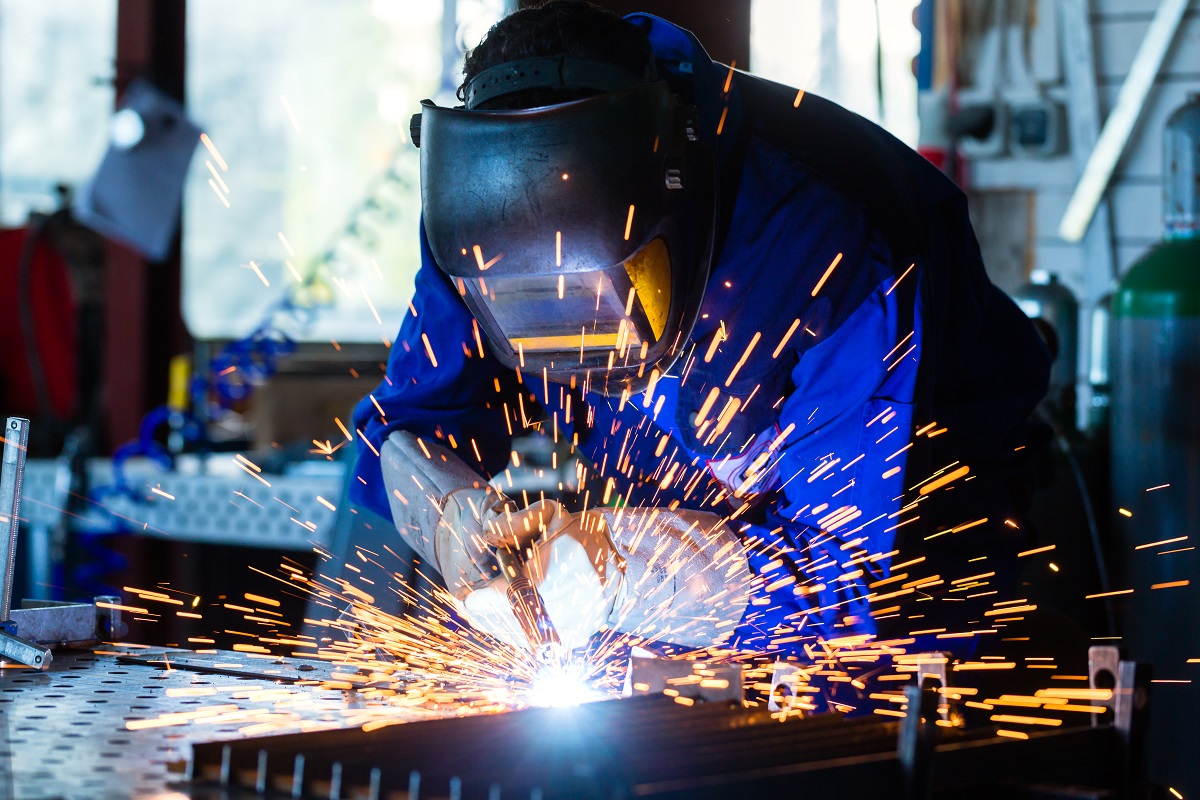6 Types of Metal Fabrication

What are the different types of metal fabrication?
- Cutting
- Metal stamping
- Welding
- Extrusion
- Forging
- Casting
Before a raw metal material can be used for manufacture and assembly, it still needs to undergo different types of metal fabrication techniques. These processes can vary, depending on the purpose of the metal, but they can nevertheless be found in a number of structural, industrial, or decorative applications.
There exist a number of fabrication processes and are oftentimes used in combination with one another. These methods can be either one or more of the following: cutting, metal stamping, extrusion, casting, and the like. Likewise, these fabrication techniques are designed to highlight a metal’s properties and showcase its versatility in application. Continue reading to learn more.
Cutting

Cutting is arguably one of the earliest forms of metalworking. Though the process and the concept of metal cutting are simple, it can also be performed alongside other complex machines.
Generally, cutting involves the following tools and materials: cutting equipment, metal specimen or workpiece, and a work desk. This process involves the removal of unnecessary pieces from the metal workpiece — be it ferrous, or non-ferrous. After removing the unwanted part, the finished workpiece can now be fitted to work with other components and systems.
Different types of finished metal products can be cut, namely diamond plate, corrugated metal sheets, steel reinforcing bars, pipes, etc. Cutting these materials can be done by using power tools or even handheld blades like a hacksaw, backsaw, or a coping saw — it ultimately depends on the intentions of the cutter.
Metal Stamping
Metal stamping is distinct for sheet metals like stainless steel, aluminum, copper/brass, or other galvanized alloys. This process is specific to sheet metals and may also be used in combination with the other fabrication methods to get the desired outcome.
One of the most popular uses for metal stamping can be found in automotive component manufacturing and assembly. This method is used to design vehicle components like the trunk lids, wheel hubcaps, doors, firewall, and many other vehicle-body-related parts.
Another reason that makes metal stamping ideal for automotive purposes is that it can also be used in coming up with unique, custom-built designs. Car enthusiasts can take advantage of this method to design specialty parts for high-performance vehicles.
Welding

Welding is simply the method of joining two metals together. While there are different types of welding techniques, they do have similar features. Like all other techniques, welding requires a metal workpiece. More than that, it also involves the use of welding equipment, shielding gas, consumable or non-consumable electrode, flux, and fillers.
Welding techniques can be classified according to their complexity. Some of the most common ones include Gas Metal Arc Welding (GMAW), stick welding, or Gas Tungsten Arc Welding. This process needs to be done in a controlled environment to make sure that the welding work is neat and free from unwanted materials that can affect the quality of the finished product.
Finished welded parts can be found in virtually any kind of metal product that you can spot in everyday life. It’s used in pipe-making, ductwork, automotive manufacturing, bike-making, steel-building, and more.
Extrusion
The extrusion process is not specific to metals, as it can also be used in the production of polymer and other plastic-based products. However, they do have extensive use in the process of profile making for steel or aluminum beams, or sectional components.
In the extrusion process, a solid billet of alloy/metal is passed through a tooling die that contains a distinct cross-section. This is made possible with the help of a high-powered hydraulic and high-pressure system that allows the billet to be shaped by the die. Once the extruded product is ejected, it can now be subject to further post-processing techniques to refine its appearance, eliminate defects, or make certain adjustments.
The most popular application for extrusions is aluminum extruded profiles that can be used for window frames, door frames, louvers, railings, mullions, or sections. While aluminum already has non-corrosive properties, manufacturers sometimes add another layer of powder coating to the material to make it longer-lasting and aesthetically-appealing.
Forging

Similar to cutting forging is also one of the oldest metal fabricating techniques. If you’ve encountered this type, then it’s no surprise that images of a blade being hammered on a solid block of anvil might be something that’s on your mind.
Despite the age of this method, forging has gone on to stand the test of time and become a reliable method of shaping metals into various sizes. Likewise, there are also different forging techniques such as cold forging, hot forging, or open die forging. While there may be differences across each method, one similarity is the use of compression forces that shape, bend, or press the metal in the desired form.
Casting
Metal casting involves the process of heating a metal until its melting point and then poured in an empty cavity mold that has a specific design. The metal is allowed to cool until it fully hardens and can be post-processed to remove minor defects and to improve the finish of the metal.
The advantage that casting has over all the other processes mentioned here, is that it can be used to create complicated shapes in a single run. Automotive, aerospace, farming, computer equipment, and other objects can be cast easily with minimal issues.
The downside, however, is that the heating and cooling process may create internal stresses in the crystal structure of the metal itself. This is why manufacturers have to carefully conduct casting operations to prevent cracks and damages on the metal.
Key Takeaway
In this list, you’ve encountered popular types of metal fabrication like casting, forging, metal stamping, cutting, extrusion, and welding. As mentioned before, these methods are used for crafting different metal components that are used in a variety of applications. They’re also ideal for customized parts that can match the preferences of the end-user.
Although the list isn’t exhaustive, it hopefully equips you with a clear picture of just how important the metalworking industry is, in making useful components not just for other industrial sectors, but also for everyday life.


